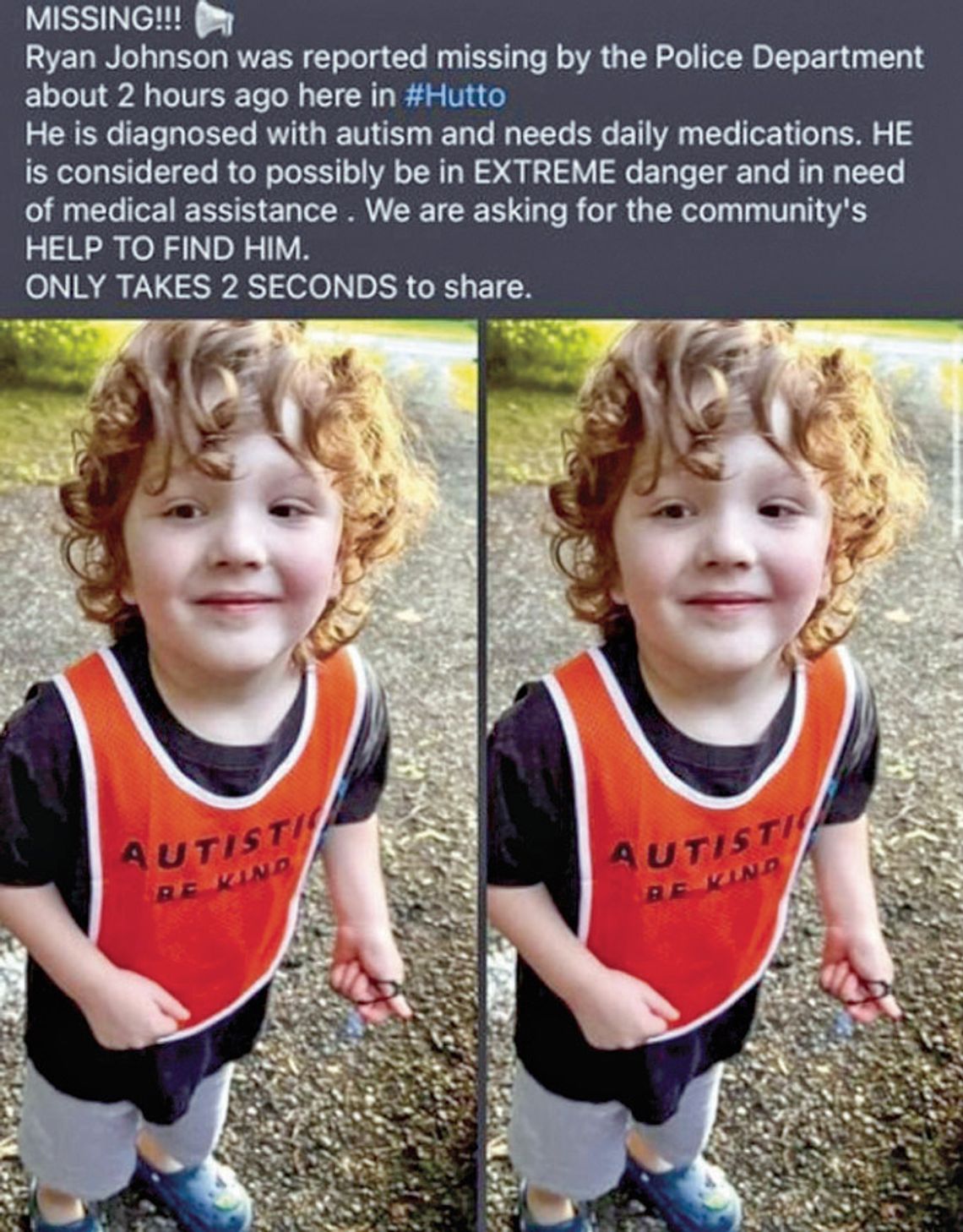EDIE ZUVANICH Special to the Press
HUTTO — The endearing face of a missing toddler and a parent’s plea for help hits a nerve most people cannot ignore — and internet scammers know it.
While several of these posts are fake, and the number seems to be rising, that doesn’t mean the public should stop caring or offering assistance, police said.
“Obviously everyone wants to help reunite a child with their family,” said Sgt. Cody Long with the Criminal Investigations Division of the Hutto Police Department. “I wouldn’t let these hoaxes deter people from wanting to take an active role in helping a kid.”
In the last month, there have been at least two legitimate local episodes where law enforcement or parents of missing children reached out to the public.
Hutto police used Facebook to ask the community to help find a 17-year-old girl still being sought as of press time.
In a second case originating just outside Hutto’s city limits, the parent of a missing 15-year-old girl also used social media to ask the community for help. Williamson County deputies were on the lookout for the teen, who was reunited with her family last week.
During the same time, there were also posts about a toddler having been found wandering alone in Hutto, with police said to be looking for the parents, and another alert about an autistic boy named reported missing in Hutto.
Both were scams. “One thing to be cautious of is not sending money,” Long said. “Contact us directly to verify if the report of a missing child is a hoax or genuine.”
Not all hoaxers ask for money, however.
According to the National Center for Missing & Exploited Children, many of these ruses are “test runs” to find people who are more likely to click on a scam post. The scammers then tag the person for future deceptions that may lead to monetary loss or identity theft.
The agency said there are several ways to determine when to click “share” on a missingchild post.
At the very least, a legitimate notification should have the child’s name, the date he or she went missing, the location where the subject disappeared, the law enforcement agency handling the case and a phone number to reach the investigating officer.
The post should come from a police agency or a credible news source. And it should have a call to action other than just “sharing,” officials said.
“One of the telltale signs of something genuine is something generated from a socialmedia account tied to a law-enforcement page, like our Hutto Police Department Facebook page. If it’s tied to that account then it’s going to be a genuine missing person,” Long said.
According to officials, signs to proceed with caution include: • Having the comments turned off, not allowing comments on the post • Not coming from an identifiable and credible
source • Misspellings, improperly used words and syntax errors • No call to action other than asking “please share” • Vague details or incomplete information about the child • No phone number or a false phone number • No name of a law enforcement agency to contact Long said fear of a hoax should not stop a person from contacting police to verify an alert or to report a missing child.
“The sooner law enforcement gets contacted the better, because time is of the essence. Especially if there is evidence of foul play, then it is critical so we can get the ball rolling on some of the resources we have,” Long said. “We’d rather come out and it be nothing, and the kid’s at a park than not be called and it turn out to be something. Get that kid reunited with that family sooner.”
The decision to use social media to ask the community for help finding a child who has disappeared is based on individual cases.
Social-media alerts may not apply when the situation involves traditional parent-child disputes, such as when a teen upset by an argument storms out of the house and drives away to cool off, police said.
“When we’re thin on leads or we may need some help, then we’ll post that on social media,” Long said. “Or something that’s going to require an elevated response from the community such as a child with special needs.”
The investigator added, “We don’t want to overuse it. We kind of keep it in reserve for those special occasions where we’re really trying to generate the response of the public to get as much help as we can.”
Knowing that some missing-child posts are legitimate calls for help while others are potentially dangerous clickbait makes it even more important to check the legitimacy of the post before sharing.
“Remember, law enforcement would never ask the public for money or identification that could lead to identity theft,” Long said.



